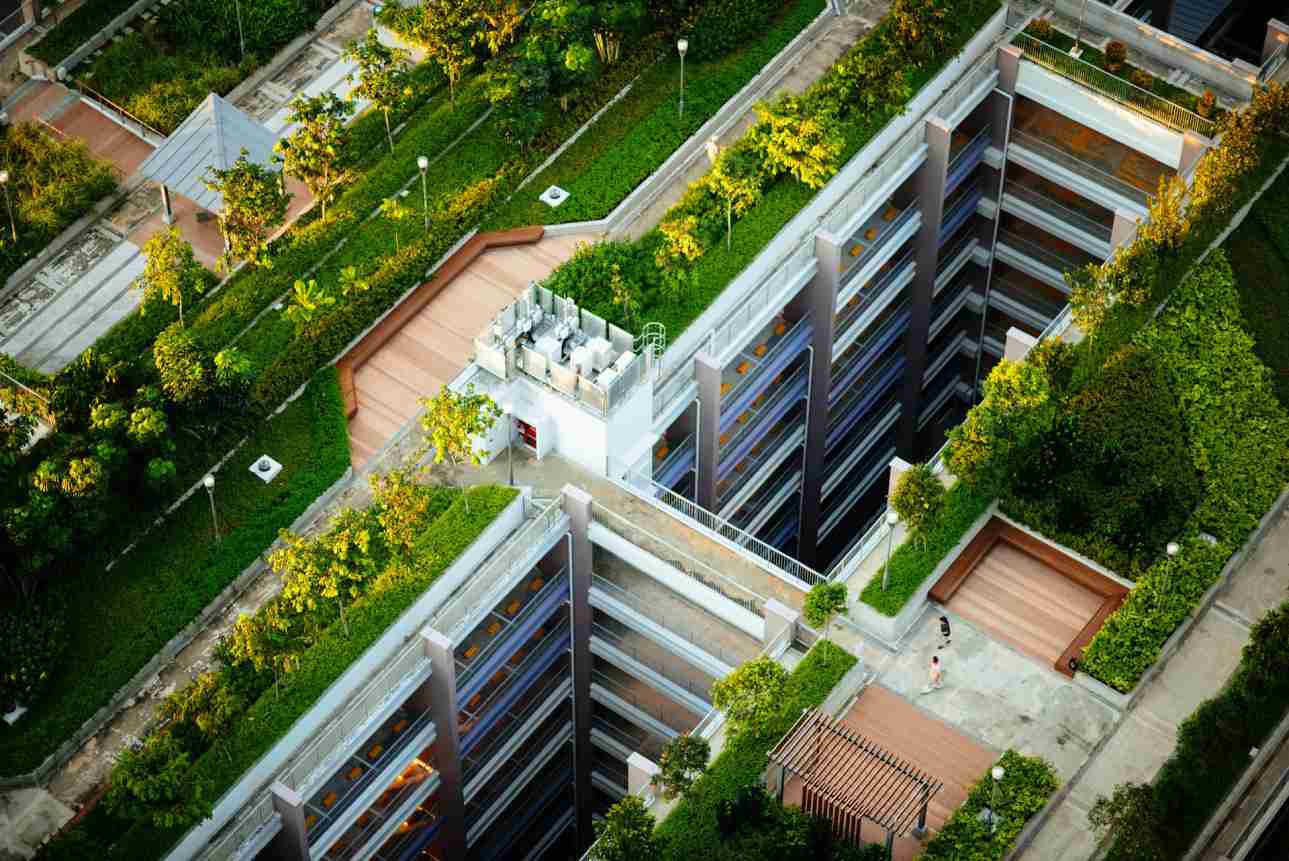A green roof, also known as a living roof, is a layer of vegetation planted over a waterproofing system that is installed on top of a flat or slightly-sloped roof. Green roofs are increasingly becoming popular due to their multiple benefits at economic, ecological, and societal levels.
Let’s explore the concept of green roofs, the benefits they confer, and the different types available.
Understanding the Concept
The idea of green roofs originated in Germany during the 1960s and has since spread to other parts of the globe. The concept involves growing vegetation on rooftops, transforming unused roof spaces into beautiful, park-like garden settings.
To achieve this, the installation of multiple layers on the roof is necessary, including a structural roof decking, vapor barrier, thermal insulation, root barrier, drainage layer, filter membrane, growing medium, and a vegetation layer. Essentially an enhanced version of the flat roof.
Types of Green Roofs
Depending on the depth of the planting medium and the type of vegetation, green roofs can be categorized into three main types: extensive, intensive, and semi-intensive.
Extensive Green Roofs
Extensive green roofs are the most lightweight, typically supporting small, drought-tolerant plants like sedums, grasses, and mosses. They have a shallow rooting system, usually only 6 inches deep, and are designed to be low-maintenance, mimicking natural ecosystems.
Intensive Green Roofs
Intensive green roofs, on the other hand, are essentially rooftop gardens that can support a wider range of plant species, including flowers, herbs, and even small trees. They require more maintenance than extensive roofs but offer more biodiversity and aesthetic appeal.
Semi-Intensive Green Roofs
Semi-intensive green roofs are a blend of the two, offering a balance between plant diversity and maintenance requirements. They can support a moderate range of plant species, including grasses, herbs, and some types of shrubs.
Green Roof Benefits: Why Go Green?
There are numerous benefits associated with green roofs, ranging from environmental to economic and societal advantages. Here are some of the most significant ones:
Improves Stormwater Management
Green roofs act as a natural sponge, absorbing and storing rainwater in the substrate, and then gradually releasing it back into the environment. This can significantly reduce stormwater runoff and delay peak flow into the sewage system, reducing the risk of flooding.
Enhances Energy Efficiency
Green roofs act as natural insulators, reducing the need for artificial heating and cooling. They can help to regulate the temperature within the building, reducing energy costs and contributing to climate change mitigation.
Promotes Biodiversity
Green roofs can provide valuable habitats for wildlife, promoting biodiversity in urban areas. They can attract a variety of species, from birds and bees to butterflies and other insects, enhancing local ecology.
Improves Air Quality
The vegetation on green roofs can help to filter airborne particles and pollutants, improving air quality. They also absorb CO2 and release oxygen, contributing to a healthier urban environment.
Reduces Urban Heat Island Effect
Green roofs can help to mitigate the urban heat island effect, a phenomenon where city temperatures are higher than surrounding rural areas due to human activities. They do this by absorbing heat and acting as insulative barriers.
Enhances Roof Longevity
By protecting the underlying roof structure from the elements, green roofs can significantly increase the lifespan of the roof. They protect the waterproof membrane from UV radiation, reducing wear and tear.
Adds Aesthetic Value
Green roofs can enhance the aesthetic value of buildings, providing space for relaxation and recreation. They can transform monotonous city rooftops into attractive and peaceful green spaces.
Supports Mental Well-being
Being in a green environment has been linked to various mental health benefits, including reduced stress levels and improved concentration. Green roofs can thus contribute to the overall well-being of people living or working in the building.
Offers Noise Reduction
Green roofs can help to reduce noise pollution. The soil and plants on green roofs can absorb sound, providing a quieter environment both inside and outside the building.
Installation and Maintenance
The process of installing a green roof involves several steps, from waterproofing the roof and installing a root barrier, to laying the substrate and planting the vegetation. It’s important to ensure that the roof is structurally capable of supporting the additional weight of the green roof system.
Once installed, the maintenance requirements of a green roof depend on the type of green roof system and the specific plant species. While extensive green roofs are designed to be low-maintenance, intensive green roofs may require regular watering, weeding, and fertilizing, similar to a typical garden.
Green Roofs and Solar Panels: A Perfect Combination
Interestingly, green roofs can enhance the efficiency of solar panels. This is because green roofs can reduce the temperature of the roof surface, and cooler temperatures can improve the performance of solar panels. Therefore, combining green roofs with solar panels can maximize the environmental benefits of your rooftop.
An Investment in the Future
Given the numerous benefits that green roofs offer, from stormwater management and improved air quality to increased biodiversity and energy efficiency, it’s clear that they represent a valuable investment in the future of our cities.
By transforming underutilized rooftop spaces into thriving green environments, we can create healthier, more sustainable, and more resilient urban spaces.
